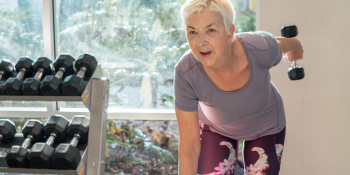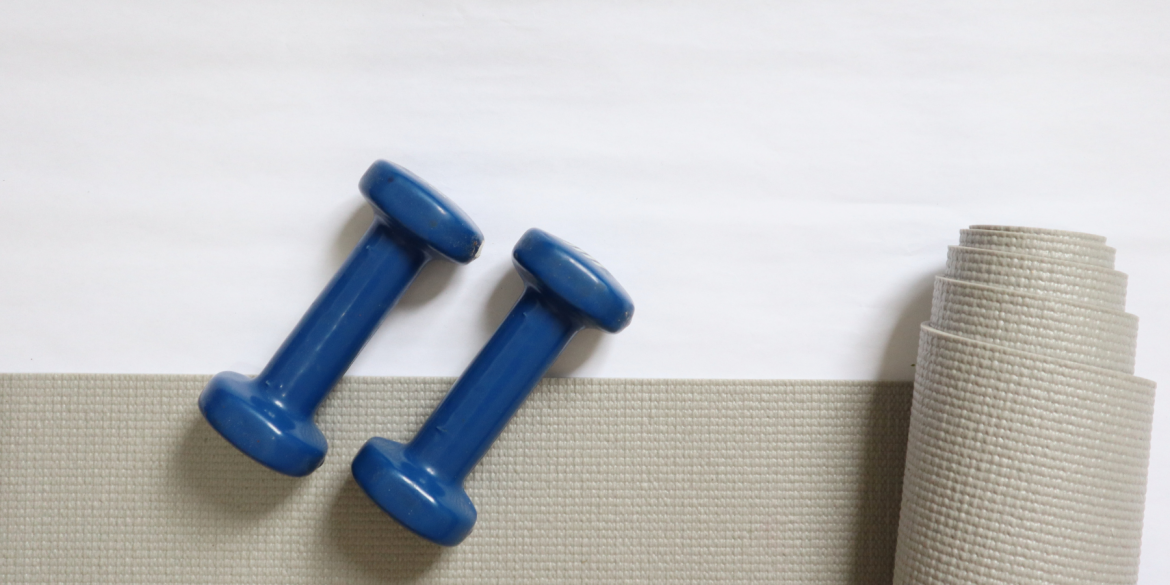Strength training is often hailed as a game-changer for women, especially when it comes to tackling the long-term symptoms of menopause.
Not only does it boost your mood, but it’s also a fantastic way to stay fit and healthy.
And now, a new study has given us even more reason to pick up those weights. Research on early retirees shows that lifting heavy weights consistently for just one year can bring benefits that last up to four years. Impressive, right?

Canva Stock Images
The study that proves the power of strength training
Conducted by the University of Copenhagen and published in BMJ Open Sport and Exercise Medicine, this study looked at nearly 500 participants from the Live Active Successful Ageing (Lisa) study. The average age of participants was 71, with 61% being women.
The researchers focused on leg strength across three different exercise routines: heavy strength training, moderate-intensity training, and a regular active lifestyle. Those in the heavy strength training group hit the gym three times a week, while the moderate group worked out once a week at a hospital and twice at home.

Canva Stock Images
The results: long-term benefits of heavy strength training
So, what were the results? Two and four years after the initial year-long program, those in the heavy strength training group maintained their leg strength, while the other groups saw a decline. Even though all participants were active, averaging 10,000 steps a day, the study highlights the long-term benefits of heavy resistance training at retirement age.
What is heavy strength training?
To get these benefits, the heavy strength training group used machines like the leg press, chest press, low row, and leg curl. They did three sets of six to 12 repetitions at 70% to 80% of their one rep max.
You can achieve similar results with these exercises at the gym or try strength training for beginners at home. The key is lifting a weight that challenges you—one that you can manage for a few reps but struggle with by the end of the set.
Why form is crucial in strength training
Form is crucial to avoid injury, so if you’re new to this, consider getting help from a personal trainer. Machines at the gym can make lifting heavier weights easier because they support your muscles, unlike dumbbells which require more balance. Plus, machines save you from lifting weights into the starting position, which can be tough on your grip.
The moderate-intensity group did circuits with bodyweight exercises like squats, press-ups, seated rows, and resistance bands.

Canva Stock Images
Is heavy-weight training good for you?
Absolutely. Boosting leg strength is especially important as you age, particularly during the postmenopausal period when osteoporosis becomes a concern. Menopause lowers oestrogen levels, leading to bone and muscle mass loss without resistance training. Muscle mass naturally decreases with age, and leg strength is a key indicator of longevity.
The study also revealed that visceral fat—stored around the organs and considered the most harmful—remained stable in the active groups but increased in the inactive group. While the study didn’t focus on weight loss, it highlighted the benefits of strength training for weight management.
The broader benefits of strength training for women
This is just the latest in a series of studies showing the perks of strength training for women. Earlier research from the University of Limerick and the University of Iowa found that strength training helps reduce anxiety and depression. Plus, just 30 minutes of exercise can significantly improve sleep quality.
ALSO SEE:
Featured Image: Canva Stock Images

